You’ve heard the rumblings, accepted the cookie banners and been warned by that one friend who swears by Duck, Duck, Go that privacy laws were coming…but is now finally the time? Over the past year state legislatures have introduced an array of comprehensive data privacy bills, successfully passed by both Connecticut and Utah. As of 2023 these two states will join California, Virginia and Nevada as the five privacy protectorates with enforceable data privacy regulations in effect as soon as January 1st. As 2022 winds down to a close, many businesses are scrambling to assess whether these laws apply to them, and if so how to comply by this year’s ticking clock deadlines. Bluetext is no stranger to data privacy, as we are well versed in the variety of cookies and tracking techniques used across websites and relied upon by the digital-aged marketers. So let’s break down what this legislation means, who it applies to and more importantly how you can comply.
First, let’s dispel some legal myths and legends. You have all probably heard of GDPR (General Data Protection Regulation), which is the EU’s extensive data privacy protection program, which defines a set of laws enforced universally across all European Union nations. So who do these laws apply to? How does it impact American companies? The impact is much more significant than one would think, because GDPR applies to both companies within the EU and any company offering services or tracking behaviors of individuals within the EU. So if your company is already complying with GDPR guidelines, you’ve got a great head start to 2023 updates.
So does the United States have equivalent laws?
Short answer: no, long answer: yes. Here’s why: European and American philosophy around privacy and individual’s rights are very different. While the European legislature honors an individual’s right to privacy as a basic human right, the American Constitution leaves these topics purposely vague and open to state wide interpretation. But as digital behaviors are becoming more visible and accessible than ever before, many states are taking the cue from the EU to establish privacy laws of their own. Most recently Connecticut and Utah joined California, Colorado, and Virginia, to create a complex patchwork of state privacy laws, with fast approving compliance deadlines of January 1st, 2023.
What’s new in 2023?
Here are the recently enacted laws & upcoming deadlines:
Effective January 1st, 2023:
Effective July 1st, 2023:
Effective December 31st, 2023
California Privacy Rights Act (CPRA) – Effective Jan 1, 2023
The new CPRA amends the previous California privacy law to expand beyond the right to privacy notice, deletion of data and opt out of selling data. The new provisions include rights to:
- Correct their data
- Opt out of sharing their data for targeted advertising
- Port their data
- Limit the use and disclosure of sensitive personal information
The most significant impact to the digital marketing industry is expanded opt-out provisions. California consumers could already opt out of the sale of their data. But starting in 2023, consumers will now be able to opt out of the sharing of their data. This significantly clamps down on marketers ability to serve up cross behavioral advertising, or targeted advertising, as this hinges on the aggregation of user’s behavioral data across multiple platforms and contexts to serve a targeted ad. Businesses will need to post links on their website so consumers can opt out of both the selling and sharing of their data.
The new law also includes some other critical changes that businesses must comply with:
- Equivalent rights to employees and business contacts the same rights as any other California resident
- Expanded look-back period for businesses responding to data requests in California beyond the previous twelve months (which was the look-back period under the CCPA) (for any personal information processed on or after January 1, 2022)
- Regularly submitted Data Protection Assessments, known as “risk assessments,” which will need to weigh the benefits and risks to various audiences with the goal of restricting processing if the risks to the consumer outweigh the benefits to all stakeholders
These updates will be applicable to any companies (regardless of HQ state) which:
- Process the data of 100,000+ California residents OR
- 50% of their business revenue is derived from the sale/sharing of California residents’ personal data OR
- Have $25 million+ worldwide revenue
Virginia Consumer Data Protection Act (VCDPA) – Effective Jan 1, 2023
Compliance with Virginia’s privacy law is generally broad and a bit simpler for businesses than the CCPA; however, it is stricter on a few key issues. Like the CCPR, the law protects six main tenants of data privacy: the right to access, opt-out, correct, delete appeal and portability. But some key differences include exemption of all organizations subject to HIPAA or Gramm–Leach–Bliley laws, as well as non-profits and higher education institutes (while exempt from VCDPA, strict requirements do apply). Virginia’s law also excludes protection of employee personal data businesses collect and process under the law’s applicability. The sale of personal information is more tightly defined as “the exchange of personal data for monetary consideration by the controller to a third party.” Monetary consideration is the key phrase which the California equivalent CPRA lacks.
Virginia’s privacy law applies to any business which:
- Control or process the personal data of 100,000 or more Virginia residents in a calendar year
- Control or process the personal data of 25,000 or more Virginians and derive over 50% of gross revenue from the sale of personal data
Starting on Jan, 1 2023 fines for violation can be up to $7,500 per violation (plus attorney fees). There is a 30-day cure period for businesses to fix any violations.
How Should Digital Marketers Prepare?
With the new year quickly approaching, many businesses are scrambling to determine if these new laws apply to them, and if so how they can comply. For businesses nationwide, compliance means increasing the transparency of their data collection process, not necessarily the complete elimination of these practices. Online web users need to be presented with cookies and tracking notices at the very start of their digital interactions, and given a clear opportunity to opt-out if they desire. Bluetext can help you implement all of the right tracking technology, collection settings and front-end user notices to make your business compliant with the changing privacy landscape. And even if you’re not yet applicable to the CPRA or VCDPA, regulations are only expected to rise. Over time more and more states are expected to get on board with recent data privacy protections with the goal of setting a universal expectation of ethical data collection practices within the United States. Bluetext’s recommendation? Regardless of whether 2023 privacy laws are applicable for your business, you may want to get ahead of the curve and implement smart, ethical and compliant practices across your website. Contact us today to learn how we can help.
Maybe you’ve seen one of those large banners across your Google Analytics property: “Universal Analytics will no longer process new data in standard properties beginning July 1st, 2023. Prepare now by setting up and switching over to a Google Analytics 4 property.” Seems problematic, right? Such a warning rings an alarm and raises several good questions to digital marketers, including: What is GA4? Should I switch now? Why is Google making me change? How do I switch? Will I still be able to access my data from previous years? If your mind is buzzing with these questions about your marketing analytics data you’re not alone. Luckily Bluetext has done its research and is here to answer some frequently asked questions and quell any lingering fears over this transition. This article will empower you to make an informed decision about Google Analytics 4.
Schedule a consultation today.
What are Universal Analytics and Google Analytics 4?
Universal Analytics (UA) is Google’s third iteration of its popular web analytics service. If you’ve logged on to Google Analytics in the past decade, you were more likely than not using UA. When UA launched in 2012, it was quite a technological leap, adding advanced features in cross-platform tracking and custom dimensions. It shaped Google Analytics from simply being a page view tracking platform to a robust data reporting and attribution tool that could compete against some of the largest web-oriented business intelligence platforms, like Tealium. Most importantly, Google provided nearly the whole feature set free of charge.
Google Analytics 4 (GA4) is simply Google’s newest iteration – think of it as a new generation of analytics technologies. The web has transformed significantly since the early 2010s, and Google is merely re-platforming analytics to match today’s realities. GA4 launched in 2019 to little fanfare but only recently gained significant traction in March of this year due to Google’s landmark announcement that GA4 will be the only analytics service it supports in 2023.
Why is Google Switching to Google Analytics 4 and Ending Support for Universal Analytics?
This is a complex question – with some good answers that Google will give you and some answers you’ll need to read between the lines to get. Google’s official statement is that GA4 better reflects the modern web. UA did a woeful job reporting on non-webpage-based metrics, such as those from web apps. It was also cumbersome if your reporting needs didn’t precisely match those of a traditional website experience – e.g., single-page or non-linear web apps. GA4 is more customizable and reflects modern data collection and attribution processes better.
The underlying message here, though, is that of data privacy. Since UA launched nearly ten years ago, fundamental shifts have occurred over how people and the law treat data privacy on the web. Think of Edward Snowden, GDPR, and the countless data breaches over the last decade. At its core, Google realizes that this enormous cache of web data collected from millions of websites, even if not strictly Personally Identifiable Information (PII), is a huge security risk to the company. GA4 is an attempt to offset some of that risk, either removing entirely or at least offloading it to individual companies. GA4’s data collection methods are more anonymized, and data retention is limited to 14 months. Overall, this is a calculated move by Google to push its analytics customers to use tools that won’t put Google in hot water.
What’s similar between Google Analytics 4 and Universal Analytics? What’s different?
While the actual end-user experience may look starkly dissimilar, the foundation remains the same. GA4 will remain an incredibly flexible web analytics platform suitable for most websites today – regardless of whether it’s a personal blog, an online retailer, or a corporate website. Most day-to-day tasks like page view tracking, user attribution, and measuring bounce rates will remain the same. GA4 merely stores these metrics and measurements in alternative locations.
That isn’t to say everything is identical. The significant differences you’ll notice every day are rooted in the architectural shift in hit types. UA treated things like page views, events, and e-commerce tracking as separate entities or “hit types.” GA4, on the other hand, treats them all as “events”. Any tracking item will now be an event: resource downloads, page scroll, form submits. Google is thus simplifying the old event architecture by putting everything on the same level – everything is an event with associated customizable event parameters.
For example, under UA, a resource download event might have looked something like this:
- Event Category: Downloads
- Event Action: Resource Download
- Event Label: resource_file_name.doc
- Event Action: Resource Download
Note that regardless of whether it was necessary, Events always took on this three-stage hierarchy. GA4 removes this rigid hierarchy. Instead of having the arbitrary “Event Action” and “Event Category” dimensions, GA4 lets one create as many custom event parameters as necessary to communicate an event’s nature fully. GA4 can track the event instead as:
- Event: Download
- Download Type: Resource
- File Name: resource_file_name.doc
Sessions are also changing. By default, UA defined the end of a session by identifying 30 minutes of inactivity since the last event. GA4 measures the period between the first and last events in a session. GA4 also doesn’t create a new session when a user’s campaign parameters are changed. The major takeaway of these changes is that session numbers will likely be lower in GA4 than in UA.
Aside from these two critical areas, there are many other minor changes. While lesser in scope, these changes may affect your reporting, depending on what kind of features you currently rely upon regularly. For example, customizable views for properties are going away in GA4. If you depend on different views, you’ll likely have to experiment with custom audience building to replicate the reporting. As mentioned before, GA4 will also only store data from the previous 14 months.
Documenting every change is beyond the scope of this blog post. If interested in getting into the nitty-gritty, read through Google’s documentation on the significant changes.
Do I Need to Switch to Google Analytics 4?
Google states that no further data will be processed after July 1st, 2023 (Customers of 360 Universal Analytics get a small extension to October 1st, 2023). While Google may extend to a further date, make no mistake, Universal Analytics will eventually be completely deprecated. If your business relies on web analytics in any form, you need to start planning soon on what your migration plan looks like – hopefully well before July of next year.
How Can I Switch to Google Analytics 4?
For most websites, merely enabling dual tracking will be sufficient. Google has made an easy setup wizard for GA4. To access it, go to the admin panel for your UA property and click the “GA4 Setup Assistant” link. You can follow Google’s instructions here, but within a few clicks, you’ll have a tracking setup that collects both UA and GA4 data. You’ll already have nearly a year’s worth of GA4 data to review once UA goes offline next year. As noted previously, be aware that no historical data will be present in GA4, even if you use this wizard. That said, it will give an excellent basis of comparison to see the reporting differences, especially as you can compare each month between GA4 and UA up until the cutoff date.
Custom events and e-commerce will require a more personalized and custom approach. We’ll cover these in future guides here at Bluetext, but for now, you can consult Google’s guides on the matter here.
I hope this guide relieved some worries and cleared up some unknowns regarding Universal Analytics and GA4. There’s a lot to cover about GA4, and this guide only covers the surface. If you have any further questions about UA4 and GA4, be it migrating data, specific differences, or a transition plan, contact us to learn more about Bluetext’s analytics capabilities.
When strategizing and creating the UX of a B2B website, making informed and data-driven decisions can make or break the impact of your site. Getting the user to your site is the first step, but once they have arrived, your content and user experience are the only things standing between a standalone visit and a conversion.
Conversion Rate Optimization (CRO) is the process of strategically enhancing your website to grow conversions. Depending on your business, this could mean a variety of different things. A conversion is defined as the completion of the desired goal, and we all know goals are never one size fits all. A goal could be a form completion, direct product purchase, a resource download, or event registration. For most B2B businesses, lead generation is the top goal. This means any action on your website in which a user demonstrates interest and provides their information is a conversion. The importance of content and UX in terms of CRO cannot be overstated, and tools like A/B and multivariate testing can be leveraged to ensure all website elements are optimized for lead generation.
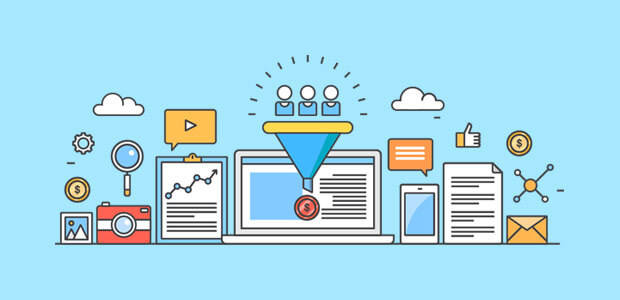
Types of Testing
A/B testing allows you to test the impact of one specific variable (for example, CTA button placement, CTA copy, page heading copy) to determine the most effective version of the page content and user experience. It analyzes user action on the variable page (version B) against the control page (version A) and ideally results in statistically significant insights.
Multivariate testing, on the other hand, tests multiple pages and content variables against the control page. While A/B testing gives insight into the effect of variables on an individual basis, multivariate testing reveals the collective impact of those variables and how they work together in one page design against another.
Multi-page funnel testing is similar to the aforementioned test types, however rather than testing variables on multiple versions of just one page, multi-page testing evaluates the impact of variables across the full user journey. This is helpful information, specifically when it comes to lead generation. Finding the ideal user experience and user journey across multiple pages and having the ability to analyze user actions from top of funnel activity to conversion allows you to make the most informed and well-strategized decisions when it comes to page content. If increased conversion rates are your goal, you want to be able to set yourself up for success with a data-supported UX.
How to Conduct A/B and Multivariate Testing
It is highly recommended that you use a CRO tool (Google Optimize, for example) to conduct user testing to avoid any SEO issues that may be caused by just creating multiple pages with specified variables in your CMS and evaluating the results in Google Analytics. Using the right tool will not only help to ensure you don’t negatively impact SEO but will also allow you to differentiate results and insights that are statistically significant from those that occur by chance.
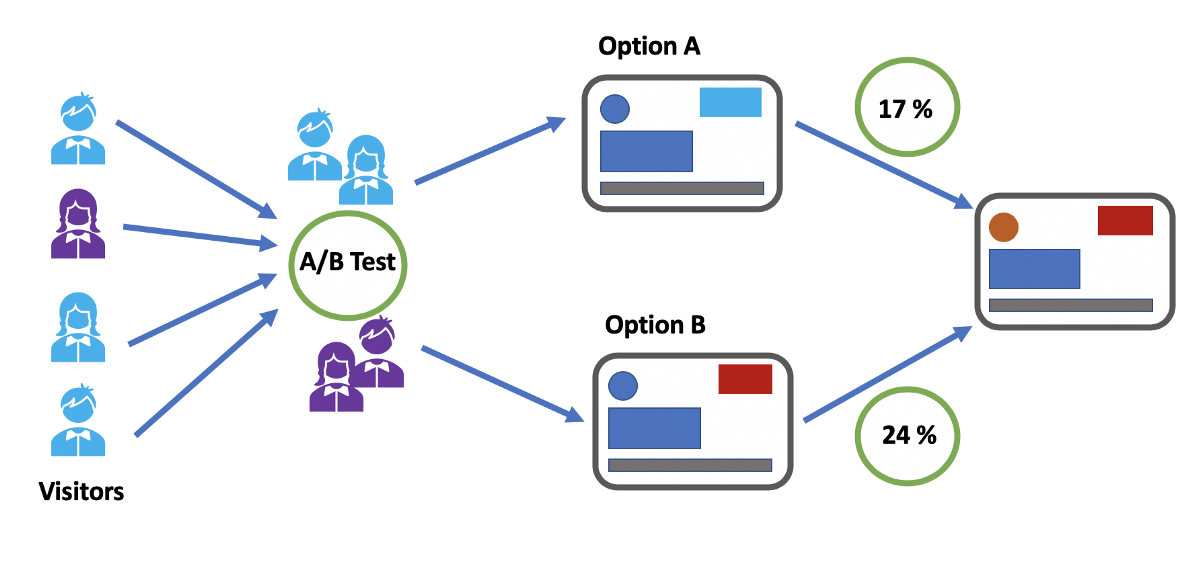
Our Tips for Split Test Execution:
- Determine the specific question you want the test to answer and form a hypothesis – An example of that question may be: Why are users not clicking the CTA on our product page? Your subsequent hypothesis will inform the type of testing you should conduct as well as the variables you should examine.
- Form a hypothesis – If your hypothesis to that question is “Users are not clicking the CTA because it does not visually stand out on the page.” The variable you could then analyze via an A/B test is making that CTA button a bolder, more eye-catching color on-page version B.
- Make sure you are using the right tools – accuracy and reliability are crucial when venturing into user testing. Setting up your test to yield clear and statistically significant results is the first and most important step in testing and CRO. Without establishing that foundation, you can end up with data that doesn’t tell you anything about user patterns but rather just a collection of events that occur by chance.
Consulting a B2B marketing analytics and intelligence company like Bluetext to guide you through strategizing and testing the many variables that come with creating a website. Reach out to learn how Bluetext can support your organization.
When it comes to digital marketing analytics and tracking, there’s a clear winner of the worldwide popularity contest. With use on over 50 million sites, Google Analytics is the most popular tracking and analytics platform available –and for good reason. With detailed insights and reports, Google Analytics gives marketers a comprehensive look at how effective their website and/or application is as a marketing tool. As a DC marketing analytics company, Bluetext has worked with countless brands to set up their Google Analytics and make use of its insights. Along the way, we’ve learned many lessons from best practices to little-known tips and tricks. In the setup process, a key step is properly defining and deploying goals in your Google Analytics instance to better report on conversion actions. As a dc marketing analytics company, we know that defining these goals is a foundational aspect of any analytics and attribution plan, so we’ve outlined the fundamentals of Google Analytics goals below.
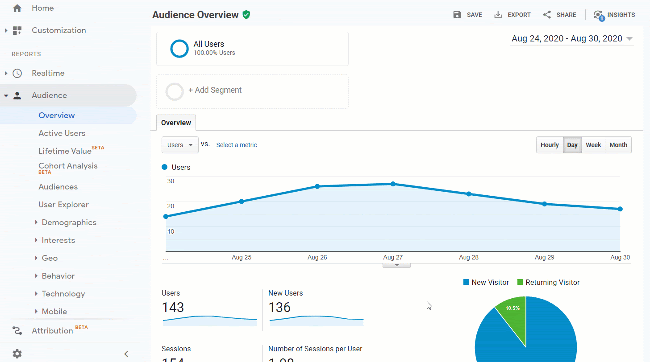
How Do Google Analytics Goals Work?
The beauty of Google Analytics is that it’s never a one-trick pony, or built for a specific type of business. The analytics platform is highly adaptable to any company’s business goals and creates custom dashboards to visualize your specific objectives. Google Analytics goals are uniquely customizable and can track many different actions, from specific page views, how long users stay on your site or application, form submissions, and more. Goals, additionally, can have a monetary value assigned to them, which allows you to track general ROI, ROAS, and countless other marketing metrics. The goal and conversion data computed by Google Analytics also allows you to define a series of reports to dive deeper into your website and paid marketing metrics. The chart below helps further define the four-goal types in Google Analytics:
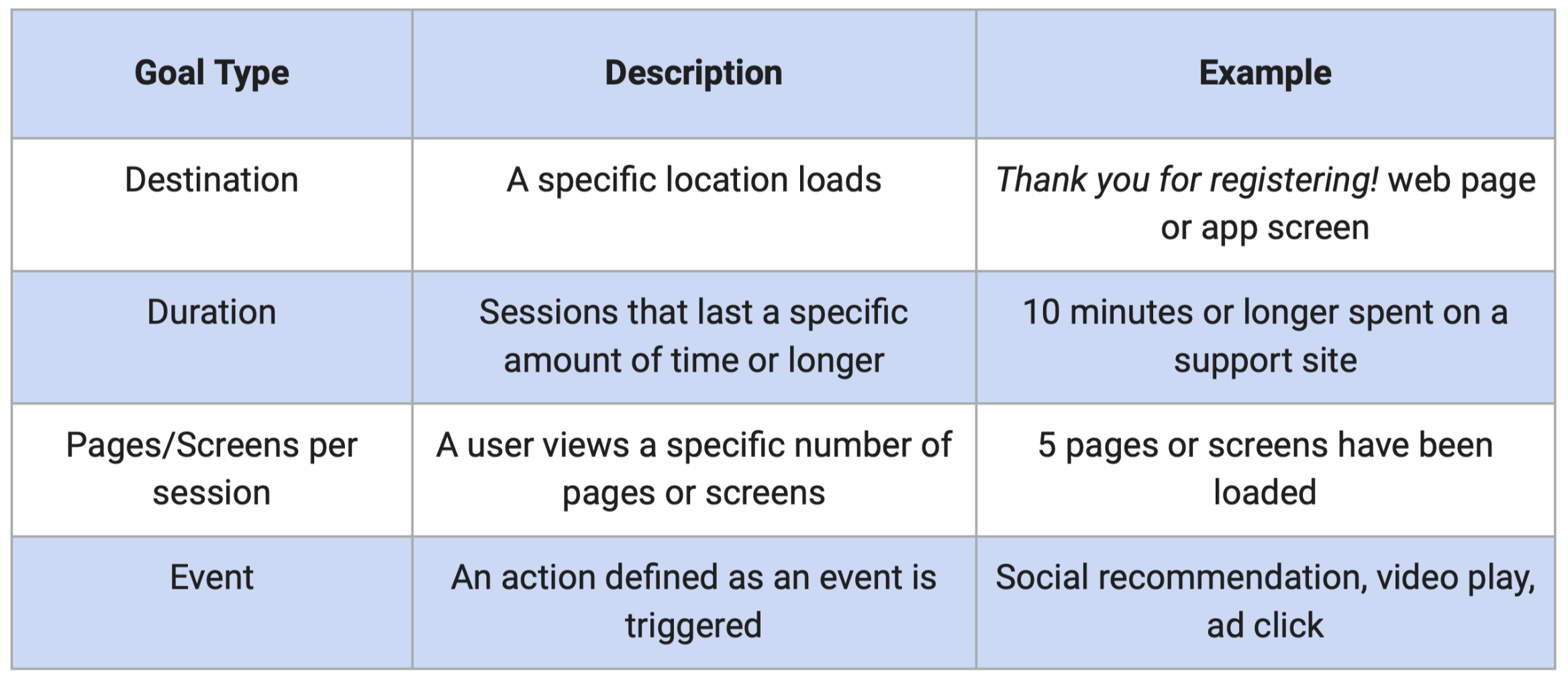
How Can I Start And Be Smart About Their Goals?
If you aren’t tracking explicit conversions yet, Google’s “Smart Goals” are a simple way to help optimize your performance. Smart goals were developed by Google as a way for marketers to track the most engaged sessions on their website. With smart bidding, Google uses machine learning to identify and examine dozens of intent signals about your website sessions, assign each session a score, and determine the sessions that would be most likely to convert. While smart goals can be great for many reasons, there are limitations. For example, smart goals are not customizable, they are currently only available for websites (not applications), and they are not available for websites that receive more than 1 million hits per day. It’s like turning on autopilot for your tracking, great for a period of time to be a little more hands-off and let algorithms do the work, but eventually, you will want to drill down and focus on converting potential prospects. With these limitations in mind, we recommend working with a marketing analytics company, like Bluetext, to ensure you are able to track explicit conversions, making your data more valuable and accurate.
What Are Best Practices For Setting Up Goals?
When setting up your goals, consider these best practices:
- Give each goal a unique and descriptive name. Especially when your marketing analytics becomes more robust over time it pays off to be organized from the start.
- When possible, assign a goal value to help monetize and evaluate your conversions. You can also use a number scale to assign importance to your goals (low-value = 1 and high value = 10) if you are unable to assign a monetary value.
- If you ever need to change goals, keep track of when and what you did. Goals are not applied to historical data, so changing one will change conversion data from the point of the change.
- Before pushing your goals to the live environment, ensure you use Google Analytics’ “Verify this Goal” feature to see how the goal would have converted over the last seven days.

Setting up goals in google analytics can be frustrating and time-consuming. The work it takes to set up google analytics goals, however, is worth the time investment. Working with a marketing analytics company can be a great way to effectively implement goals and reduce the amount of time needed to do so.
Interested in working with a marketing analytics company to ensure your Google Analytics goals are effective and properly set up? Contact us here!
62 seconds. That’s the average amount of time a user will spend on a website before hopping to another page. 62 seconds for your website to show off all your company has to offer. 62 seconds for you to create a spark of interest that will keep your customer’s cursor away from the dreaded back button. The attention span of modern internet users is a fickle thing, dashing between emails, articles, quick searches, and more. So when you have only a little over a minute to hook a viewer, you better make every second count. A beautiful landing page can grab a viewer’s attention, but a strategically crafted landing page will keep them there. Below are some tips that top digital marketing & website design agencies use to hold the attention of your audience when they land on your site.
Helping Your Users Take Action with Interaction
A favorite UX design practice to encourage digital engagement is the use of interactive elements. This elevates the user experience from passive observer to a participant (referring to any degree of interactivity) on your landing page. When inviting users to interact with content, UX designers tread a fine line between doing too little and asking too much from their audience. Subtle elements such as eye-catching hover states and scroll-initiated animations are one way to get the user involved and create interesting effects based on their cursor movement or scroll. The logic behind these interactive elements is basic psychology — rewarding the user for viewing your content or scrolling encourages them to continue this action. Once visual interest is sparked, the user is more likely to continue scrolling on-page to view content and eventually reach a lead generation form.
Lending Your Users a Hand with Custom Cursors
Another top trend in interactive content is custom cursors. Brands are beginning to implement custom cursor shapes and styles, and even animations triggered by placement on-page. One of Bluetext’s favorite examples of interactive landing pages is Asimily, a page with several subtle interactive elements, including new content triggered on scroll, animated hover states, and typography motion.
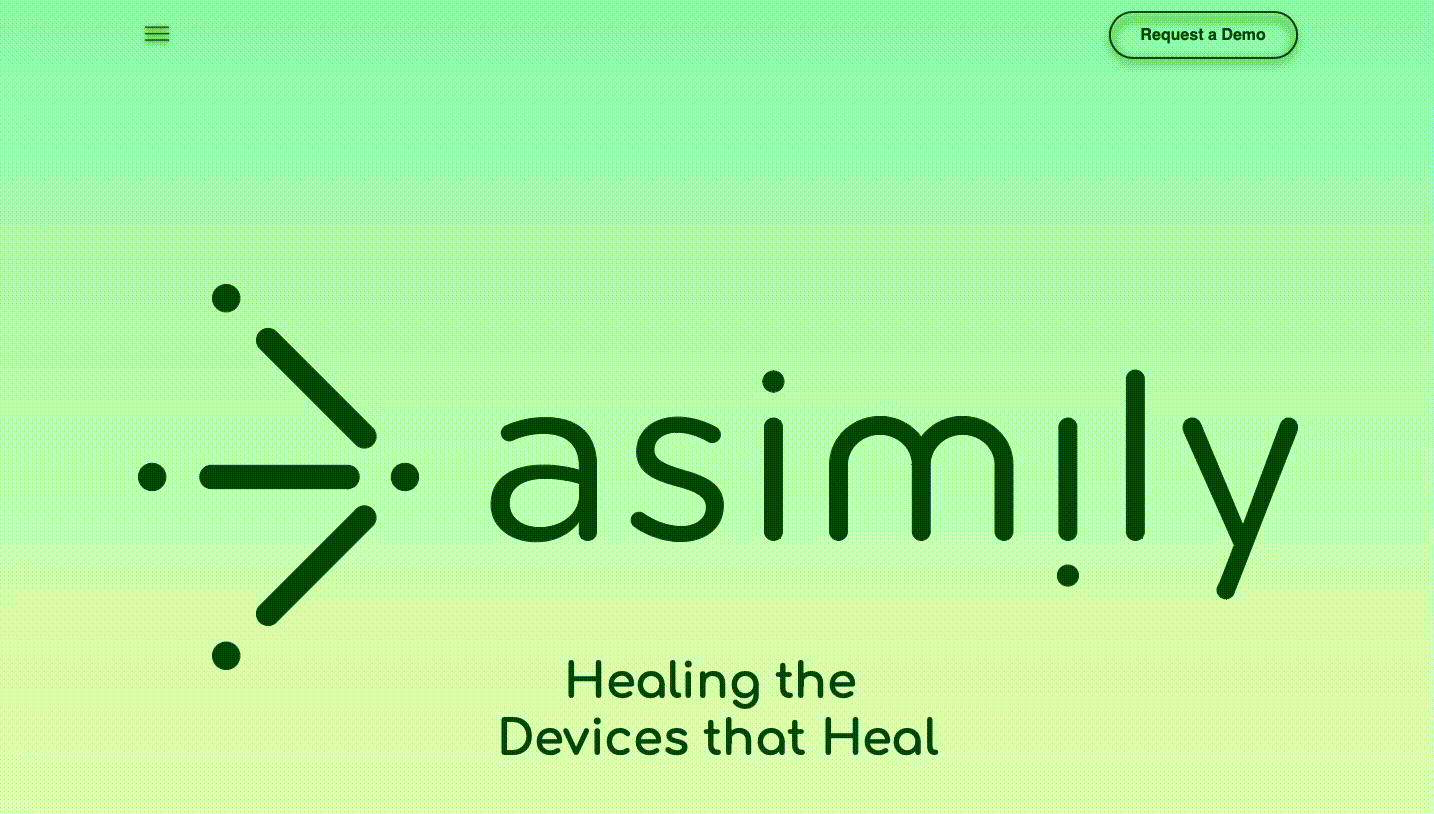
Animations That Keep Your Audience Still
Animation is also a powerful tool to capture and retain attention, with elements like looped animations ensuring that a user catches an effect and can continue to watch it. Animated promotional videos can also be leveraged into powerful lead generation tools. Videos are quite effective for generating leads because they present a simplified version of your offering, and are far more engaging, and require less effort than reading an article. Animations are a great way to convey key information more efficiently and effectively on what your brand has to offer.
Take the Lead with Your Landing Page Strategy
Ultimately, these little changes can make a big difference in converting prospective customers into solid leads. There are many other ways to increase leads to supplement interactive elements. Targeting by channel, limiting navigation, including a clear call to action, and communicating key insights clearly all contribute to a more impactful strategy. Aggregating strong messaging, website design, and user experience best practices can enhance conversion rates on landing pages. Need help achieving better leads? Bluetext is here to bring stronger leads to your company through exceptional content and design.
In true Google fashion, Google Ads is changing the way you can advertise again. Previously, you were able to create Expanded Text Ads (ETAs), but beginning June 30, 2022, all of your standard search campaign ads will need to include at least one Responsive Search Ad (RSA) per ad group. The good news is this can improve your search campaign’s performance if managed correctly. And at least for now, ETAs are not fully leaving. In fact, Google even recommends having two ETAs along with an RSA for each ad group. Diversifying your ad groups sounds great in theory, so maybe Google is doing digital marketers a favor. Nevertheless, change is change, even in the most advantageous versions. So let’s break down why including RSAs can help your business achieve campaign objectives.
First, What Are RSAs?
RSAs could be considered within the next-generation tech wave of AI marketing, almost like a self-driving car for your search campaigns. Responsive search ads let you create an ad that adapts to show more text—and more relevant messages—to your customers. Enter multiple headlines and descriptions when creating a responsive search ad, and over time, Google Ads will automatically test different combinations and learn which combinations perform best.

How do RSAs differ from ETAs?
One of the key differences between ETAs and RSAs is that RSAs are more dynamic. Rather than creating multiple ads for different users, now you can create a single RSA with various headlines and descriptions, then Google will automatically tailor the ad to fit the user’s needs. RSAs allow you to set up to 15 different headlines and up to 4 different descriptions. The drawback to this new method is that you can’t preview the exact combination of text users will see, so you need to ensure your headlines and descriptions can all work together. But more on that later!
While ETAs give you more direct control over your ads, they also require you to update them more frequently to remain relevant. RSAs however require fewer updates since they can provide fresh combinations of headlines and descriptions to users on each visit. This ensures your ad copy doesn’t go stale and can match up top-performing headlines to the potential customers. The tradeoff for this benefit is that RSAs typically take longer to set up, as they require more thought initially.
So how can you prepare?
One of the things you can start doing is experimenting with RSAs for testing purposes. Meaning, you should continue creating your ETAs for now, but supplement them with RSAs to get the hang of the upcoming change. This combined approach allows you to experiment with your optimal ad copy while also leveraging Google’s machine learning insights. Beyond that, you can experiment with pinning headlines in your RSAs. This gives you similar control of your ads to ETAs by ensuring specific copy appears in the first, second, or third position of your headlines.
Machine Learning-Based Recommendations
Google’s shift towards RSAs is pushing advertisers to rely on Google’s machine learning algorithm more and more. A benefit of this change is more relevant recommendations for your account’s performance. While these recommendations can help you discover new relevant features and improve your bidding strategy, an experienced digital marketing agency such as Bluetext can help steer your campaign to success.
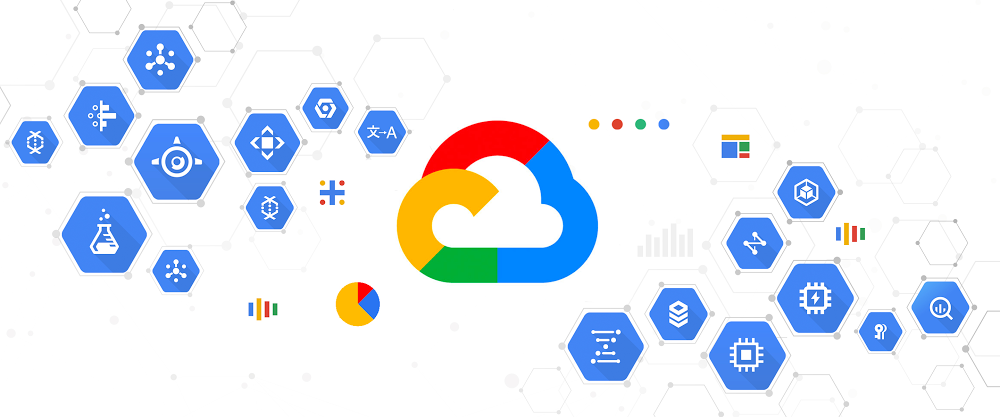
Ongoing Performance Monitoring and Improvements
While the recommendations page can assist you in finding some trends based on historical data, you’ll still need valuable data to base those decisions on. That’s why any good campaign should utilize ad variants to test different messages. That way your historical data can reflect a range of ad variants and you can determine which combinations work best. This also allows you to determine the best way to tweak each ad for ongoing performance optimization.
When it comes to these ongoing performance-based adjustments, you should do your due diligence in checking the data. But data is data, without proper interpretation of insights, there are no actionable changes to truly optimize your ad spend. That’s where digital marketing expertise can make a difference. Bluetext’s search campaign experts are skilled at sifting through marketing data to identify trends and recommend areas for improvement. Want to learn more about how Bluetext can help your ad campaigns thrive? Get in touch with us here.
The next time you’re in a public setting, look up, and chances are you’ll notice almost everyone around you has their eyes glued to a mobile device in hand. Modern-day mobile devices are essentially mini computers, enabling on-the-go browsing, communication, and connection at unprecedented ease. Society has become accustomed to instantaneous connection, but not all websites are up to par with user expectations. While desktop sites were once the focus, a disappointing mobile performance of websites is holding many companies back from their full online potential to garner customers. Aside from a frustrating user experience, poor mobile performance can hurt a website from a technical SEO perspective. This is why many companies are turning to digital agencies like Bluetext to revamp or create entirely new, responsive web designs & optimized performance to stand out among their competitors.
On average, mobile devices account for more website user traffic than desktops. However, despite the high traffic volume, conversion rates on mobile environments are significantly lower. So what’s turning our mobile users away? Adrienne Clem, Director of Search Ads Growth and Optimization at Google, describes that it could be an issue with any one of the following pillars of mobile website design:
Speed
Page Speed is a key indicator of website quality, as it is a critical first impression of your website. The longer a user must wait for your website content to load, the higher the risk of the user leaving the page and increasing the bounce rate. Bounce rate, performance, and speed metrics all play a critical role in Google search crawlers’ evaluation of a website. (such as, In addition to limiting bounce rates, reducing your Time to First Byte can also increase your site’s SEO ranking. You can keep tabs on your site’s speed performance using tools like Google, PageSpeed Insights, or GTMetrix.com, but consulting a website development agency can offer further insight into actionable steps to improve your site’s performance.
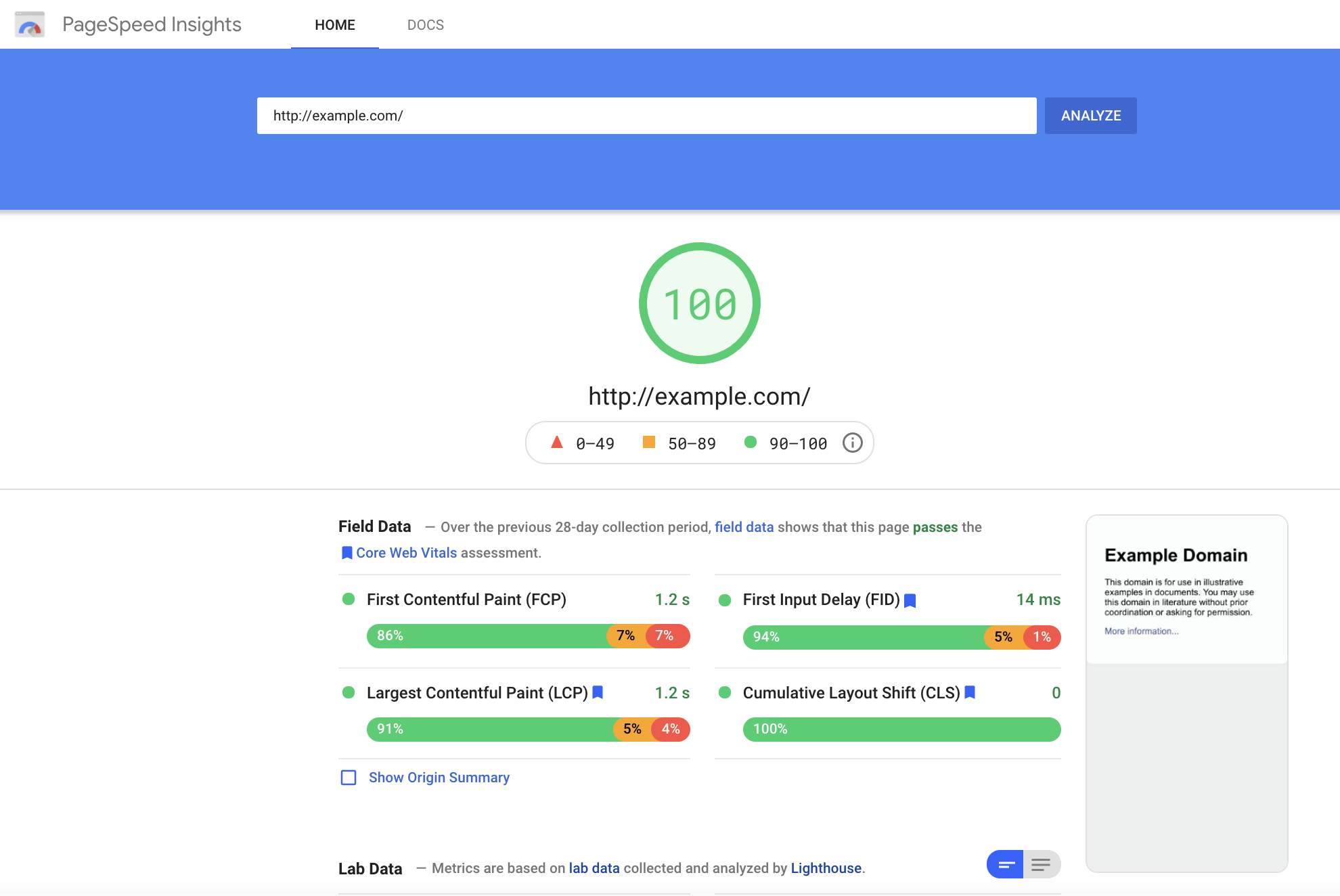
User Experience
All websites should be designed to be as simple as possible for users to navigate. However, this isn’t as easy as it sounds. Content hierarchy, navigation, and calls to action are all critical components that need to be equally accessible and intuitive across desktop & mobile formats. Responsive layouts are essential in a mobile-optimized design, but more important is the speed at which content loads for a user. Mobile site speed tends to lag behind its desktop counterpart, but a poor mobile performance can significantly ding your site’s SERP ranking and create a poor user experience. Even the most creative & persuasive landing pages are wasted if features take too long to load on the screen. Pages that utilize AMP (Accelerated Mobile Performance) technology both rate higher on Google search rankings and increase chances of conversion for paid media promotions. AMP HTML is an open framework based on existing web technologies, that allows for more lightweight and speedier mobile web pages. In an initiative to enhance the shift to mobile browsing, AMP-powered webpages load instantaneously, even when they contain rich media like video, animations, or graphics, including things like Twitter and YouTube embeds.
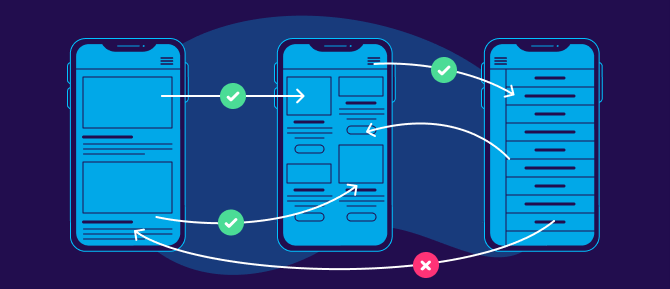
Iterative Design
Website design is an iterative and ongoing process. Platforms & technology are constantly evolving to include new features, remedy existing pain points and approach the ever-moving target that is positive user experience. Companies should approach this process in the interest of continued learning and constant improvement. Collecting feedback should be built into the plan for any mobile site development, as the site’s performance should be re-evaluated at least every 3-6 months. Keeping track of your site’s vitals is an important step for ensuring that your site stays relevant and isn’t losing out on potential conversions.
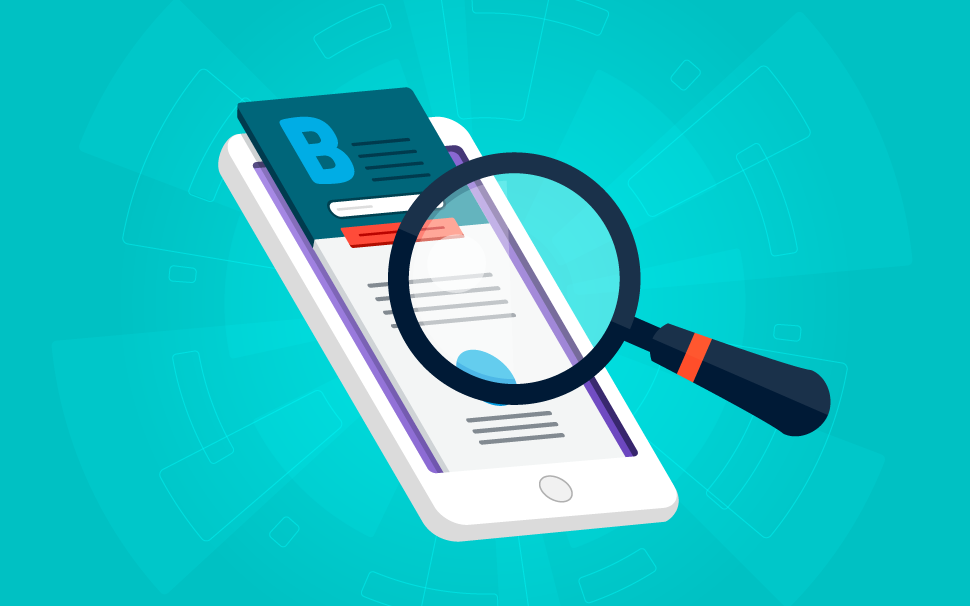
In an increasingly mobile-first world, emphasizing the performance of sites on mobile devices can increase customer loyalty and satisfaction. Whether a prospective customer’s impression of your campaign landing page or an existing customer’s experience browsing your full website, speed is the name of the game. Keeping up-to-date with best practices in website development and enlisting the help of seasoned designers and UX specialists can transform users from mindless mobile scrolling to enthusiastic interactions on your site.
If you’re ready to start designing your site with a mobile audience in mind, Contact Bluetext for guidance and expertise.
The needs of a modern consumer are not static; they are constantly moving and advancing, shifting and changing. Customers adopt and discard products at breakneck speeds, seeking new opportunities for enjoyment and discarding them at the first sign of trouble. For a product to remain relevant in the eyes of today’s consumers, it must be able to not only meet their present needs but evolve alongside them to seamlessly adapt to future needs. Effective product management requires two critical steps; first, a deep understanding of how consumers use a product, secondly the ability to leverage that knowledge into actionable improvements. To do so, your business must understand product intelligence and its essential role in an impactful relationship with your customers.
What Is Product Intelligence?
Product intelligence refers to the use of software to collect and analyze data about a product’s performance with users. These systems gather and interpret information about how users’ interaction delivers critical insights on strengths and opportunities for improvement. Product intelligence also takes into account external factors that influence the customer relationship. Shipping, marketing, customer support, and countless other service touchpoints all influence consumer perception and ultimately the experience of your offerings. Product intelligence software helps aggregate these factors to evaluate the performance of your product holistically.
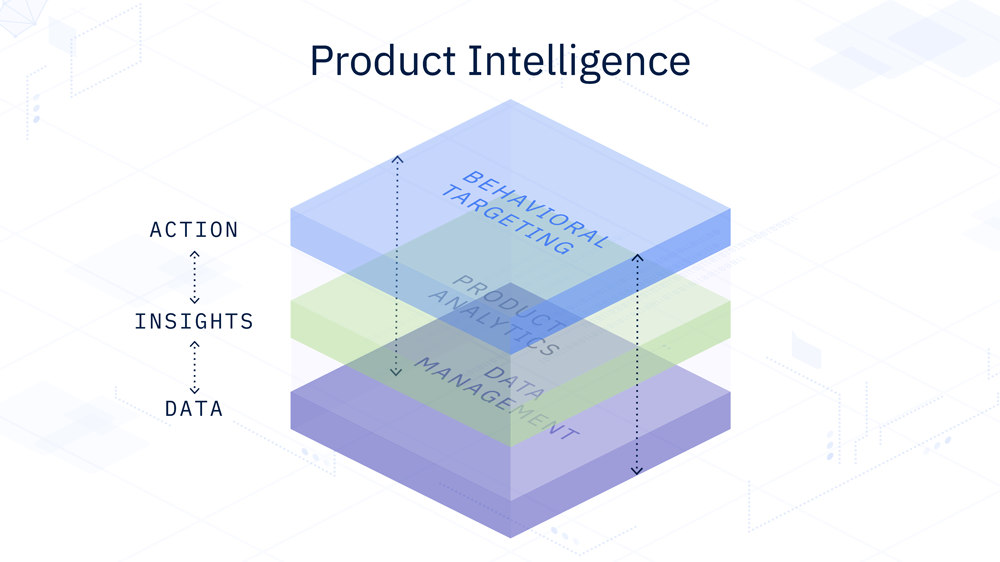
The ultimate goal is to create a positive feedback loop that enables product teams to iterate and innovate with greater speed and higher accuracy. By leveraging critical insights about the customer experience, product management teams can implement improvements to engage, convert, and retain users more effectively.
Product Intelligence Best Practices
- Understand the Customer Journey – While website interactions and app behavior are important, you need to include insights from marketing campaigns, ad spend, and other touchpoints to drive a deeper and more impactful understanding of your customers. Analytics, behavioral targeting, and customer data management cannot remain isolated from each other when optimizing product experiences.
- Collaboration Cannot Be an Afterthought – Services and integrations don’t get you a great product experience; teams do. For product intelligence to make a real impact on your business, you need to support efficient collaboration among product teams. That means being able to keep pace with rapid question-asking, in-depth exploration, agile decision-making, and generally enabling the most frictionless product development process possible.
- Assess Your Competitive Landscape – Your product offerings don’t exist in a bubble, and understanding the potential interactions consumers could have with the competition helps guide you towards truly differentiable improvements. You should strive to know your competitor’s products, strategies, and marketing tactics just as well as you know your own.

Why Is Product Intelligence Important?
Consumer preferences can change in an instant, and companies that can’t keep pace are destined to fail. Product intelligence ensures that your business will never be left behind by shining a light on the key factors that influence whether or not a consumer buys and continues using your products. Whether it’s through illustrating conversion paths, documenting user interactions, or detailing which marketing campaigns attract new visitors, the product intelligence process provides a holistic view of how your product adds value to people’s lives.
Navigating the high-stakes challenge of effective product marketing can seem like a daunting task. That’s where Bluetext can support. From omnichannel media campaigns to product videos & landing pages, Bluetext’s digital marketing experience can ensure customers old and new take notice of your company.
Have you ever searched for a term or product, then had to wade through a sea of ads before you could find what you were looking for? What’s even more frustrating is seeing the same ads over and over again. As a social media firm and B2B marketing agency, Bluetext knows there’s a fine line between getting your message in front of users and overdoing it.
Ad fatigue, the term for “when your audience sees your ads so often that they become bored with them and stop paying attention,” can be costly and can make your advertising ineffective. Over the years, as a social media firm and B2B marketing agency, we’ve found several of the most effective ways to avoid ad fatigue. Keep reading to learn 4 ways you can avoid wasting your paid media budget:
1. Decrease Ad Frequency
The best and most obvious way to decrease ad fatigue is by limiting the number of times a user sees your ad. Unless you place a frequency cap or have an audience of millions, advertising platforms will continuously serve your ads to the same users. For the user, this can be frustrating and can even turn them away from your brand. In fact, AdEspresso conducted a study to see the impact of ad fatigue on Facebook and found the following results:
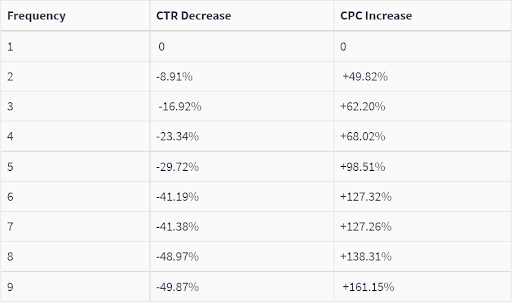
In this study, as frequency increased, CTR decreased and CPC increased. Of course, there is no one size fits all approach to frequency; that said, however, through our time as a B2B marketing agency, we recommend making changes if frequency surpasses 4 or 5 on Facebook.
2. Refresh. Refresh. Refresh.
Another great way to reduce ad fatigue is by updating your creative frequently. By doing so, users get to see fresh ads all the time. Your company and message may remain the same, but a new visual approach will catch the eye and give the impression of a new, shiny nugget of content. If you don’t have the resources to constantly update your ad creative, something as simple as adjusting the description text, links, or CTAs on Facebook, LinkedIn, and other social platforms can help refresh your content. Otherwise, a social media firm, like Bluetext, can be a helpful resource for achieving scalable creative production.

3. Test Your Audiences
One of the most important ways to optimize your creative and reduce ad fatigue is by A/B testing your creative. From CTAs to copy, A/B tests can vary in goals. It’s vital, however, that you run the test for long enough to reach a large enough sample size. Using a sample size calculator is the best way to ensure your audience is large enough to reach statistical significance.
4. Create Custom Segments
By creating custom audience segments, you can exclude users who have already completed the desired action on your landing page. In turn, you can avoid overwhelming users and make sure you’re spending your media dollars as efficiently as possible. With custom segments, you can also create retargeting audiences. With specific retargeting and dynamic creative, you can serve customized content to users based on their previous search queries and interests.
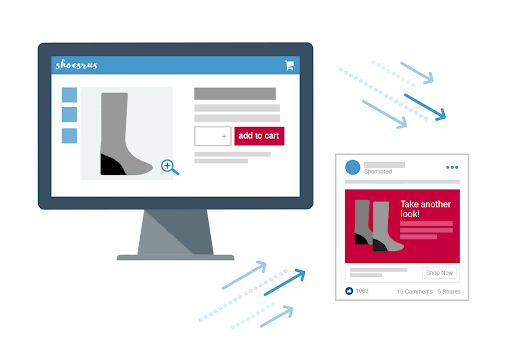
Needless to say, ad fatigue negatively affects campaign performance by increasing CPCs, decreasing CTRs, and frustrating users. Taking steps, like the ones listed above, to combat ad fatigue will ensure you are spending your money efficiently and keep your audience engaged.
Interested in working with a social media firm and b2b marketing agency to ensure your ads have a positive lasting impact? Contact us here!
When you think of your business’ data, what is the first thing that pops into your head? Graphs, charts, and databases? Spreadsheets filled with row upon row of figures waiting to be put to use? While all of these things are important to your business’ data structure, they’re only individual parts of an extensive data ecosystem, an understanding of which is critical. Data ecosystems provide companies with reliable data to understand their customers and to make better pricing, operations, and marketing decisions.
What is a Data Ecosystem?
A data ecosystem is defined as a collection of infrastructure, analytics, and applications used to capture and analyze data. These applications collect and filter information for businesses to better understand their users, website visitors, and audience members. The term “ecosystem” is used because data ecosystems are dynamic and expected to constantly evolve to accommodate the changing needs of your organization.
At their core, data ecosystems are used to capture data and produce meaningful insights. As customers use products, especially digital ones, they leave behind data trails. By creating a data ecosystem, companies can catalog and analyze data trails so product teams can better understand user preferences. The best data ecosystems are constructed around a product analytics platform that enables teams to integrate multiple data sources, provide machine learning tools for automation improvements, and track user cohorts to simplify calculating performance metrics. Additional applications that analytics platforms empower include increasing user engagement, increasing user retention, and conversion tracking and marketing funnels.
Creating a Data Ecosystem
The three essential elements of a data ecosystem are infrastructure, analytics, and applications. Infrastructure can be thought of as the foundation on which everything else is built. It’s the hardware and software that capture, collect, and organize data, including servers for data storage, search languages like SQL, and hosting platforms. Analytics serves as the entryway that teams use to access their data ecosystem. Analytics platforms sift through and summarize the data within the infrastructure, so all data is visualized in a centralized place. At this level, an organization can segment users and measure them with marketing funnels, identify the traits of ideal buyers, or automatically send in-app messages to users who are at-risk for churn. Finally, applications are the individual components of the ecosystem, the services, and systems that act upon data and make it usable. At this level, users can work with their analytics data to drive critical outcomes across the organization, like a marketing team drumming up leads based on activity or a sales team tracking key user engagement. Finally, applications are the individual components of the ecosystem, the services and systems that act upon data and make it usable.
Optimizing Your Data Ecosystem
There is no one-size-fits-all approach to optimizing your business’ data ecosystem. There are, however, two concepts you can keep in mind as you work towards the right fit; democratizing your data science and establishing strong data governance. A key benefit of good data management is that everyone has the ability to access reports and insights. By democratizing your data and purchasing a large number of licenses for your analytics software, rather than restricting access to only a few employees, you can prevent bottlenecks in the flow of information and promote a frictionless exchange of information. That’s not to say that you should leave everything unbound, however. Setting rules and boundaries for employees about collecting, protecting, and accessing data is essential for shielding your company from liability and complying with federal laws about privacy protection. A marketing analytics agency, such as Bluetext can assist with prescribing the right data ecosystem tailored to your organization’s needs.
Impactful Outcomes of a Data Ecosystem
For an organization to remain competitive in any industry, they have to have a comprehensive understanding of their data. Understanding your company’s data ecosystem is the first step towards segmenting your user base, learning who they are, and revealing how they interact with your business. Informed decision-making at every level of an organization stems from understanding and engaging with its data ecosystem.
It’s no secret the digital marketing industry depends upon and craves data. Any piece of information gathered about a user can be used to strengthen your lead generation, campaign or website strategy. While every digital marketer is hungry for data, there is no value without context and robust understanding. Marketing analytics can and should be used to inform, as well as validate any digital strategy.
Contact Bluetext if you’re interested in turning analytics into action.
